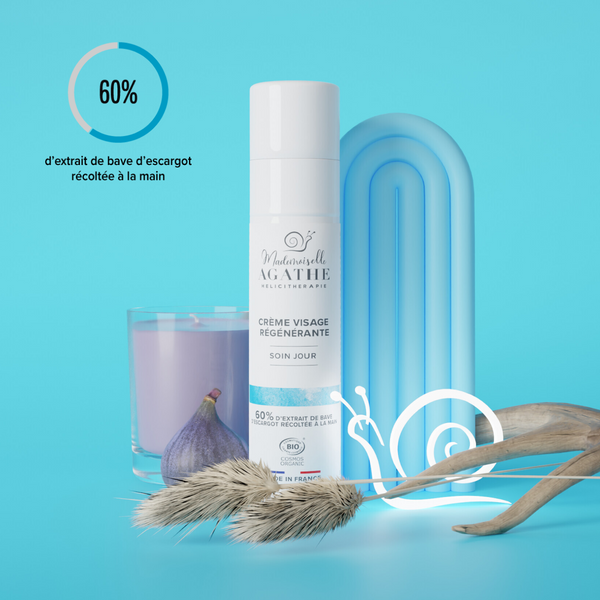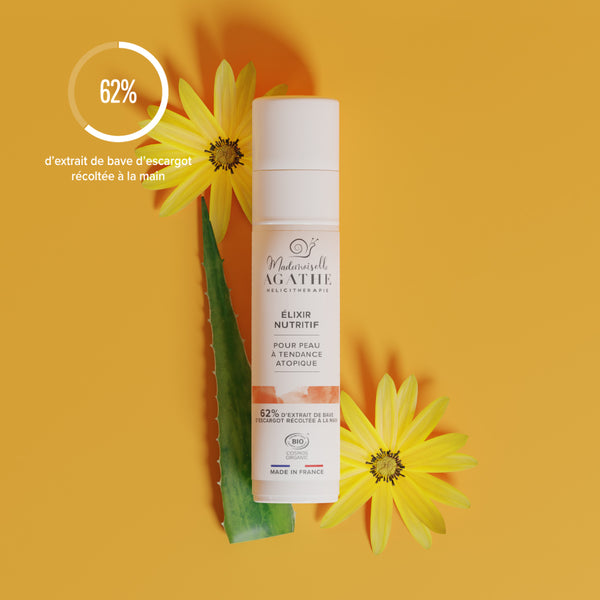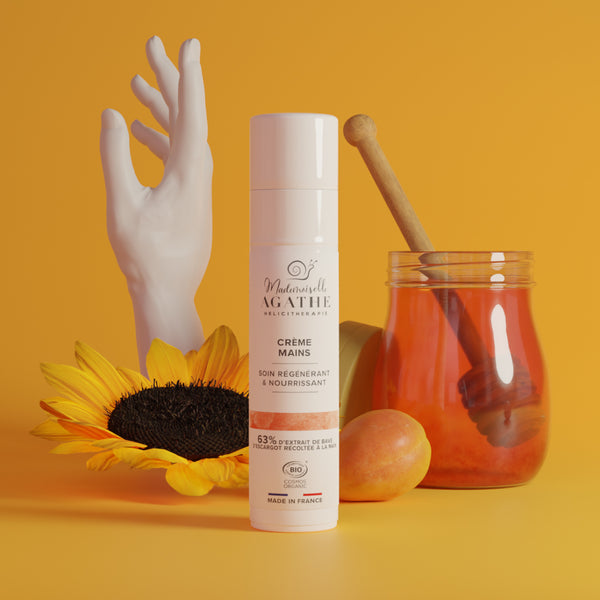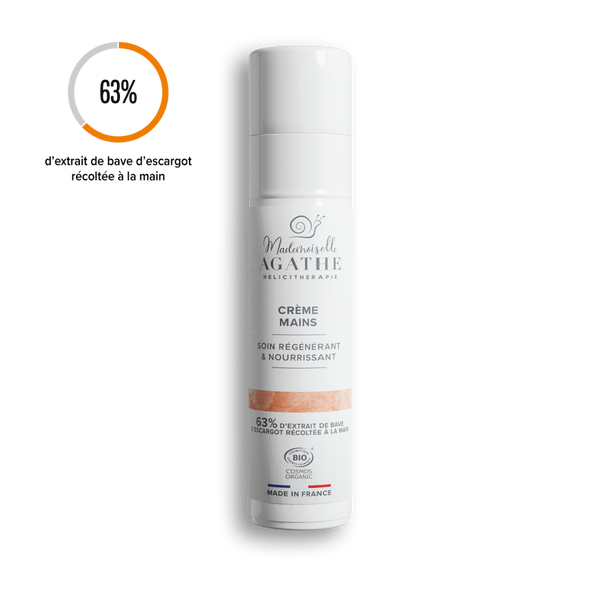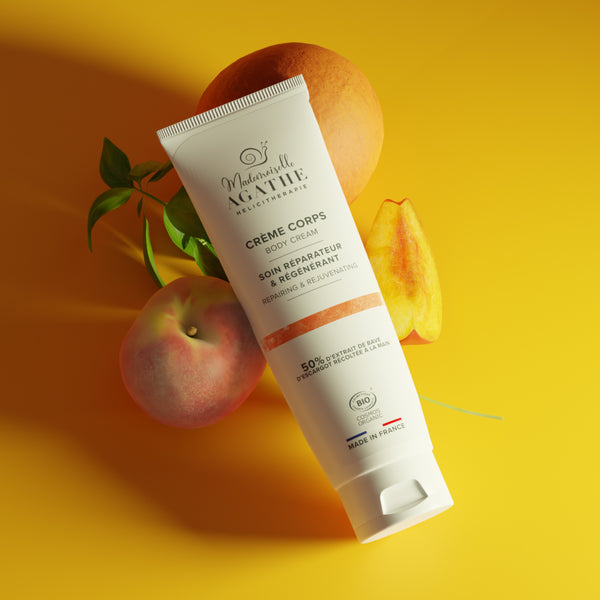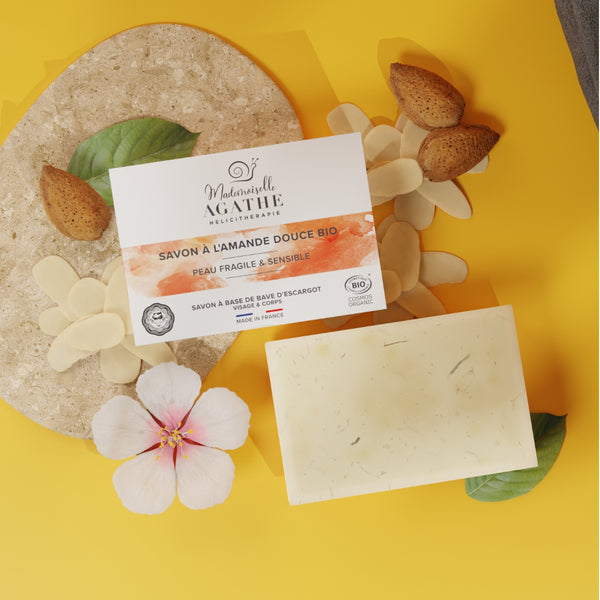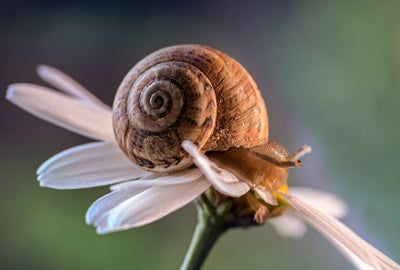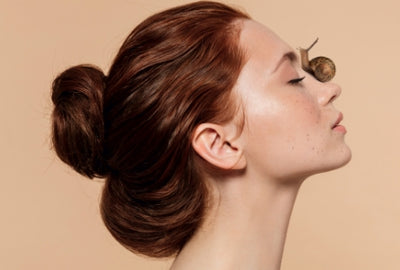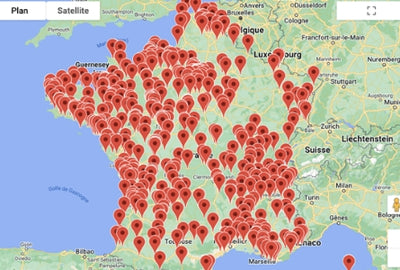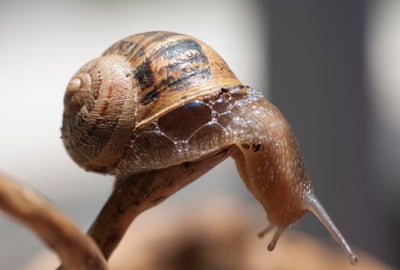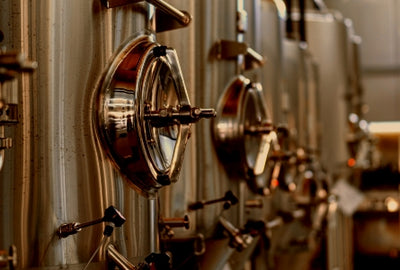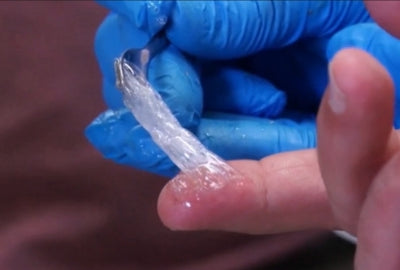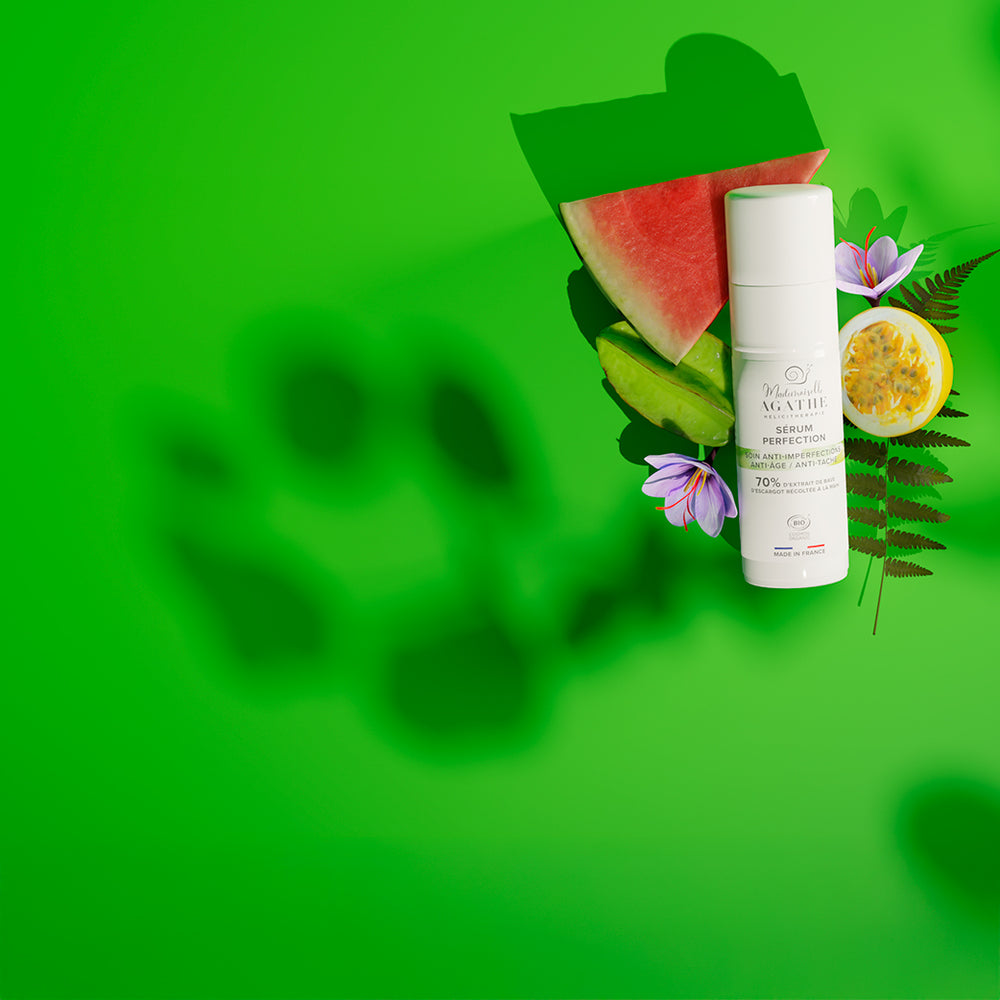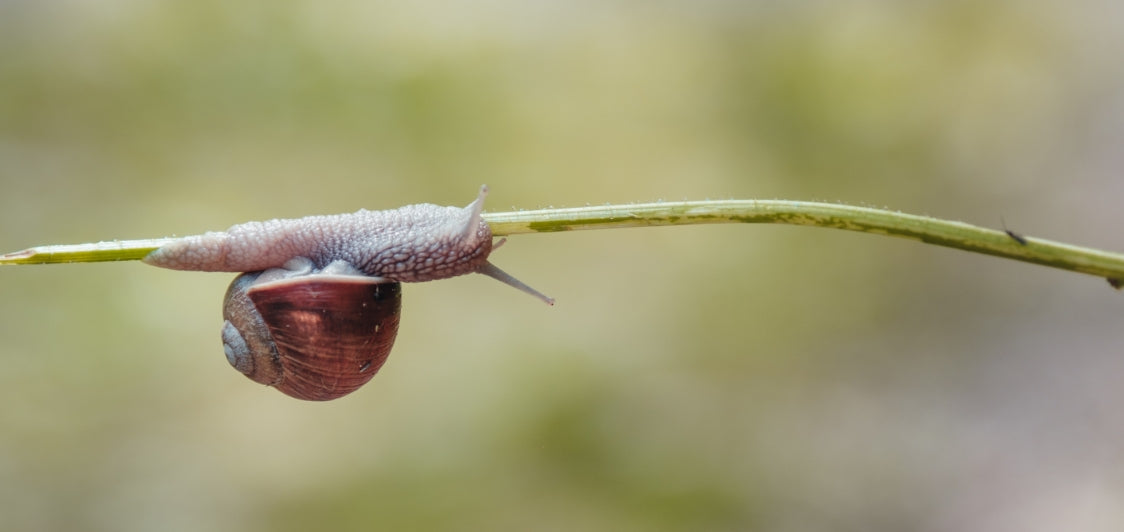
All about the power of the snail
The snail has many resources to evolve quietly but never back down. It can repair its shell in a few days, move 150 times its own weight, or walk over a razor blade without cutting itself. And all thanks to his secret weapon: his MUCUS.
A wonderful construction of nature! With more than 540 million years of existence and more than 100,000 known species, its shell is extremely efficient.
By counting the growth lines, one can appreciate the age and the physiological state of the animals. It is by its external edge that a shell enlarges: this one, thin and fragile at the beginning, then becomes rigid (we then say that the snail is "bordered").
The shell is an effective natural armor that has allowed gastropods to survive time and climatic upheavals.
The shell of snails is an external skeleton secreted by the dorsal surface and the free edge of the mantle. It is mainly composed of calcium carbonate.
At birth, the baby has a shell that will form the apex of the adult shell. Then, the growth is neither continuous nor regular.
It can slow down or even stop during periods of inactivity and fasting of the animal, especially in winter or in the event of prolonged drought. These irregularities are manifested by the formation of growth streaks often visible on the surface.
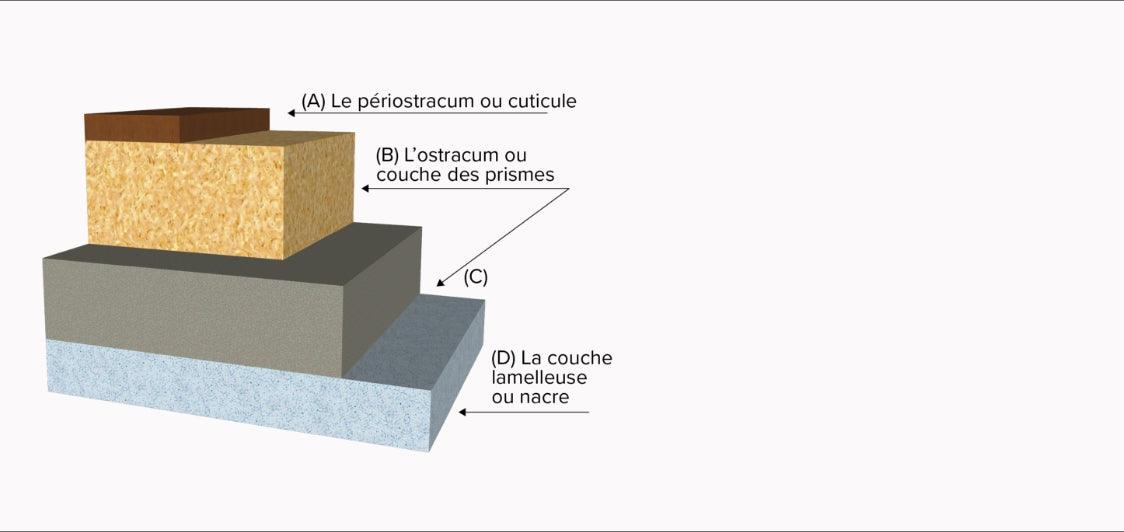
A shell in 3 main layers
• The periostracum or cuticle (A): a kind of very resistant protective varnish secreted by a glandular groove at the edge of the mantle, it is here that the dyes for the color of the shell are usually located.
• The ostracum or layer of prisms (BC): secreted by the edge of the mantle, this middle layer, more or less thick, is, as its name suggests, made up of hexagonal prisms of calcite stacked in columns, arranged perpendicular to the surface of the shell and embedded in cells made of conchiolin fibers.
• The lamellar or mother-of-pearl layer: (D) secreted by the entire dorsal surface of the mantle, it results from the regular stacking of layers of conchioline and layers of limestone made up of crystallized flakes of aragonite. All the layers are parallel to each other and to the surface of the shell, interlocking like the tiles of a roof. It is this laminated arrangement with a satin aspect and these metallic colors characteristic of mother-of-pearl.
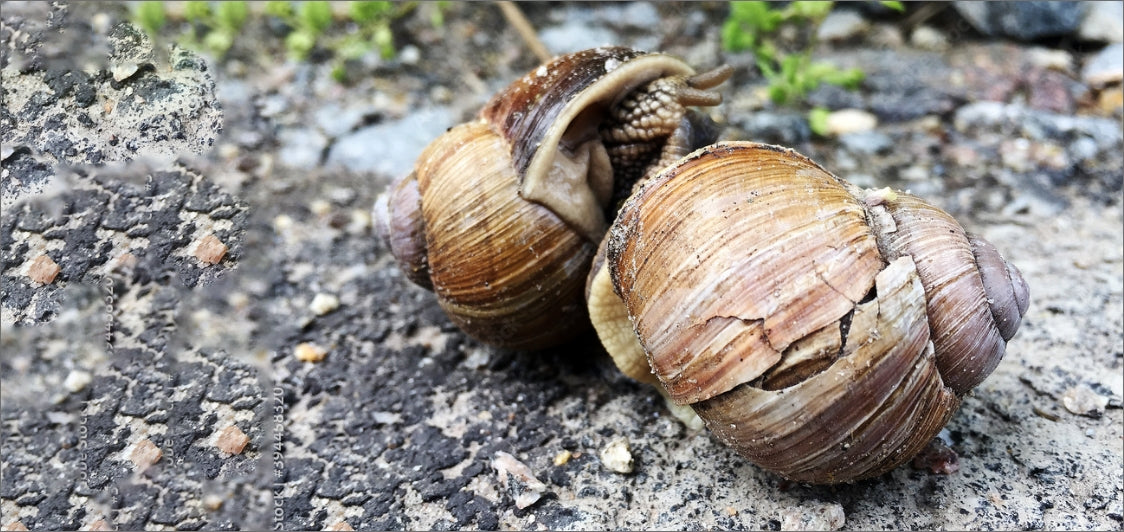
He can mend his shell
The snail is capable of exceptional self-regeneration. Its shell, which constitutes its first means of defence, is its priority in terms of regeneration.
The steps for repairing a “defect” in the shell of the helix aspersa snail are:
1. The “defect” is filled with a glycoprotein-rich mucus matrix.
2. Epithelial cells are secreted into the matrix.
3. Coinciding with the formation of the matrix, there is a high concentration of ribonucleic acid.
4. The organization of the matrix changes so that it becomes less water soluble, denser and more calcifiable.
Calcification begins at the outer surface of the matrix and continues inward towards the epithelium.
A strong mathematical relationship
The snail carries many symbols within it: the spiral, the horn, fertility, humidity, protection, rebirth, resurrection. And her hermaphroditism expresses the reunion of opposites, the disappearance of dualities, the return to a unity similar to that expressed by the involution of a spiral. But wouldn't the snail's shell be an indicator of mathematical power in nature?
-

Pythagorean Snail – (582-495
Before JC) -

Golden rectangle – Fibonacci –
(1170 – 1250)
A snail's shell has a logarithmic spiral shape. And as Pythagoras (580-495 BC) said, everything is mathematical! He also discovered that one could make a figure strangely resembling a snail's shell by adding right-angled triangles.
If we construct a geometric figure with right-angled triangles, the first of which is isosceles with side 1, with hypotenuse √2 from this hypotenuse and we start a new triangle having sides 1 and √3, then 1 and √4 etc, we find our snail shell. (See figure above)
We can draw a snail shell from another mathematical series, that of the golden rectangles discovered by Fibonacci of Pisa (1170-1250) in which each term is the sum of the two previous terms.
Mathematics is often found in nature and the spiral of a shell is one of the most striking examples. Could the snail be an almost mystical outcome of nature? That's what some think...
What is certain is that from a mathematical point of view, the shell of a snail demonstrates mathematically indisputable distance ratios. This would tend to prove that mathematics is not an invention of man, but indeed a primary element of the natural organization of the elements whatever the scale of the observer.
Biomimicry or how to learn from nature rather than take from nature
Biomimicry consists of taking inspiration from the solutions of natural selection adopted by evolution to transpose the principles and processes into human engineering. The approach aims to favor "choices" proven by nature, within the framework of sustainable development; in better harmony with the environment and sustainable in the long term. The concept is based on a key idea: nature always works on a principle of economy and optimal efficiency and it generates no waste (“nothing is lost, everything is transformed”). Whatever the field of application, the biomimetic philosophy is therefore explicitly part of a global strategy of responsible development, concerned with establishing a viable balance between the resources offered by the planet and their exploitation.
From our point of view, it seems to us that the snail has developed 2 different strategies to solve a problem related to gravity. The snail at rest is fixed for its safety under a support in height. It tries to stay as far as possible from the ground to escape its predators (mainly birds and rodents). It therefore tends to fall when its mucus loses adherence and it is no longer able to retain its weight.
Some species of snails have chosen different strategies during their evolution. The Mourgéta snail, for example, has a thick and very solid shell in order to resist shocks due to falls, but they fall more often.
The little gray and the big gray have chosen to refine their shell and therefore lighten it. This saves them many falls, but these are often damaging to their shell. They have therefore developed a complex of proteins in their mucus which has the mission of synthesizing the limestone of their diet and quickly repairing its shell. This faculty offers them the possibility of synthesizing many other natural elements. The most amazing thing is that the vast majority of proteins present in their egg-laying mucus are related to our own human skin.
There are other examples of biomimicry, such as these Iranian student architects who took a desert snail as a model to imagine the design of a building capable of maintaining a temperate temperature...

Drool or mucus
It is a substance neither liquid nor solid, it is a state of matter that is flexible and elastic.
So the real question is, how can they walk on one foot in slime? Because the sticky mucus produced by snails is not only a lubricant, it is also a glue. It can even be described as “viscoelastic”. The water is trapped in a three-dimensional molecular structure, so it can no longer flow and becomes viscous.

1
creeping mucus
The snail moves with a mode of locomotion in which its foot progresses only forwards by group movements. Indeed, the snail advances slowly with only one foot in the glue. Because the viscous mucus that snails produce for this movement is not only a lubricant, it is also a glue. It can even be described as “viscoelastic”
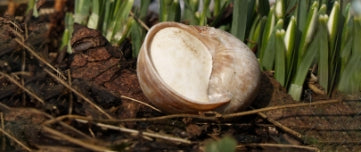
2
epiphragm mucus
Ectothermal animals (cold-blooded animals that cannot control their internal temperature themselves) adopt a slower lifestyle, by ceasing to feed. The snail then closes its shell with an operculum called “The epiphragm”. This mucus is essentially made up of limestone in order to ensure with its shell a barrier against frost.
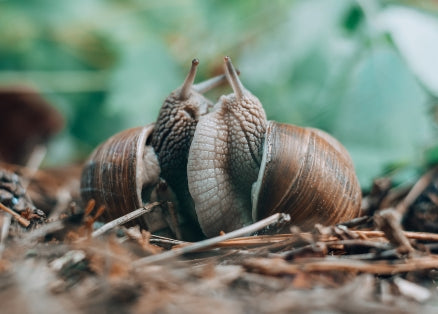
3
breeding mucus
The mucus covering the snail's "stinger" doubles its chances of fertilization during mating. The snail's fertility appears to be attributable to chemical reactions associated with the mucus rather than the stinger itself. The snail, as everyone knows, is hermaphrodite, that is to say it has both male and female organs. Its mating can last about ten hours.

4
Defense or stress mucus
The snail's only means of defense is to curl up in the shell by blowing bubbles in a very liquid foam-like mucus of low protein quality. This mucus has practically no viscosity and is the mucus mainly harvested by the cruel mechanical methods of " disgorging or milking " or also called " Fresh Slime ".

5
The mucus lays
The snail leaves a nutrient-rich mucus that covers the hole where it deposited its spat. Newborns will be able to feed on it during the first days of awakening. This mucus is thicker and very rich in biological macromolecules such as allantoin, glycolic acid and vitamins with the essential function of optimizing spat development.
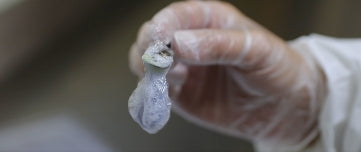
6
The mucus we collect
We exercise snail by snail, stimulating its foot for about thirty seconds and this once or twice a year immediately after spawning. This stimulation gives a first rather liquid mucus that we evacuate to reach a second much thicker mucus with a very high viscosity rate. Because it is this viscosity that translates the wealth of chemical bonds between a large number of proteins.
The composition of snail slime
We have identified during our studies in mass spectrometry with the Museum of Natural History in Paris, and a chromatography with the University of Rouen. More than a hundred proteins. The most surprising thing is that all the proteins, peptides, vitamins and other metabolites all have a more or less direct relationship with human skin, the immune system of the skin, or even with the healing process of the skin.
SEE THE BENEFITS OF SNAIL SLIME
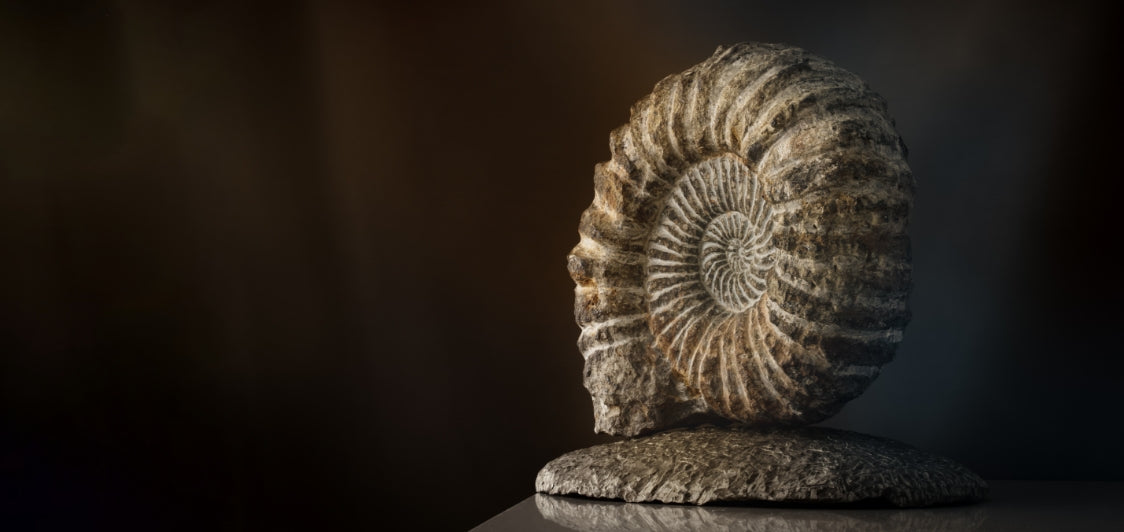
All about the life of the snail...
Discover the life of the snail, its diet, its reproduction, and all the wonderful tips that its natural evolution, 541 million years old, has given it. Nature has encouraged it to deploy formidable strategies in its reproductive and hibernation behavior, and we can already admit that if this little animal has so many years of natural evolution it is because its anatomy is particularly well adapted to life.
LEARN MORE